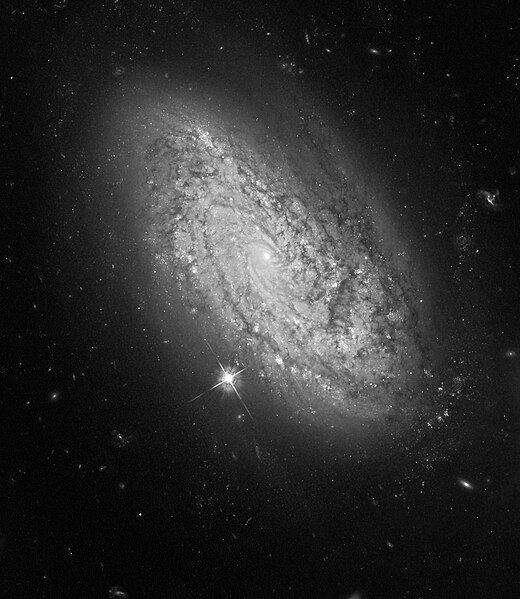Dosiero:NGC 3021 Hubble.jpg

Grandeco de ĉi antaŭvido: 520 × 599 rastrumeroj. Aliaj distingivoj: 208 × 240 rastrumeroj | 416 × 480 rastrumeroj | 666 × 768 rastrumeroj | 888 × 1 024 rastrumeroj | 1 838 × 2 119 rastrumeroj.
Bildo en pli alta difino ((1 838 × 2 119 rastrumeroj, grandeco de dosiero: 1,75 MB, MIME-tipo: image/jpeg))
Dosierhistorio
Alklaku iun daton kaj horon por vidi kiel la dosiero tiam aspektis.
| Dato/Horo | Bildeto | Grandecoj | Uzanto | Komento | |
|---|---|---|---|---|---|
| nun | 23:42, 31 maj. 2009 |  | 1 838 × 2 119 (1,75 MB) | Friendlystar | {{Information |Description={{en|1=Less than 100 years ago scientists didn't know if the universe was coming or going, literally. It even fooled the great mind of Albert Einstein. He assumed the universe must be static. But to keep the universe from collap |
Dosiera uzado
La jena paĝo ligas al ĉi tiu dosiero:
Suma uzado de la dosiero
La jenaj aliaj vikioj utiligas ĉi tiun dosieron:
- Uzado en ar.wikipedia.org
- Uzado en arz.wikipedia.org
- Uzado en az.wikipedia.org
- Uzado en be.wikipedia.org
- Uzado en ce.wikipedia.org
- Uzado en diq.wikipedia.org
- Uzado en eu.wikipedia.org
- Uzado en fa.wikipedia.org
- Uzado en hr.wikipedia.org
- Uzado en kk.wikipedia.org
- Uzado en lb.wikipedia.org
- Uzado en mk.wikipedia.org
- Uzado en my.wikipedia.org
- Uzado en nl.wikipedia.org
- Uzado en pt.wikipedia.org
- Uzado en ru.wikipedia.org
- Uzado en sh.wikipedia.org
- Uzado en sk.wikipedia.org
- Uzado en sr.wikipedia.org
- Uzado en tr.wikipedia.org
- Uzado en tt.wikipedia.org
- Uzado en uk.wikipedia.org
- Uzado en uz.wikipedia.org
- Uzado en www.wikidata.org


